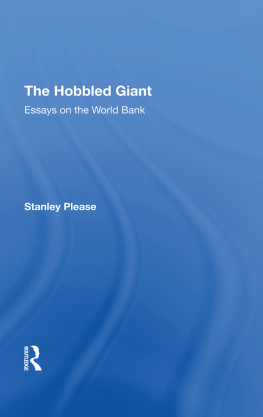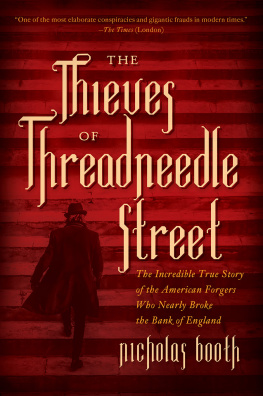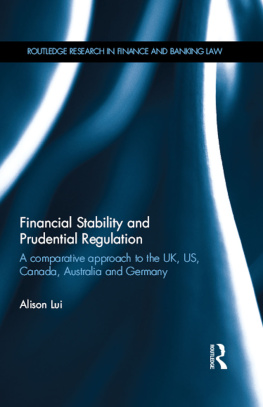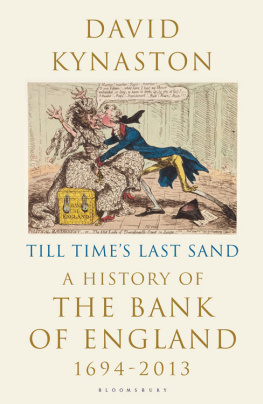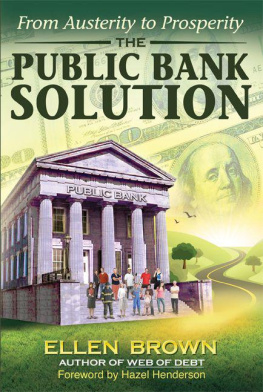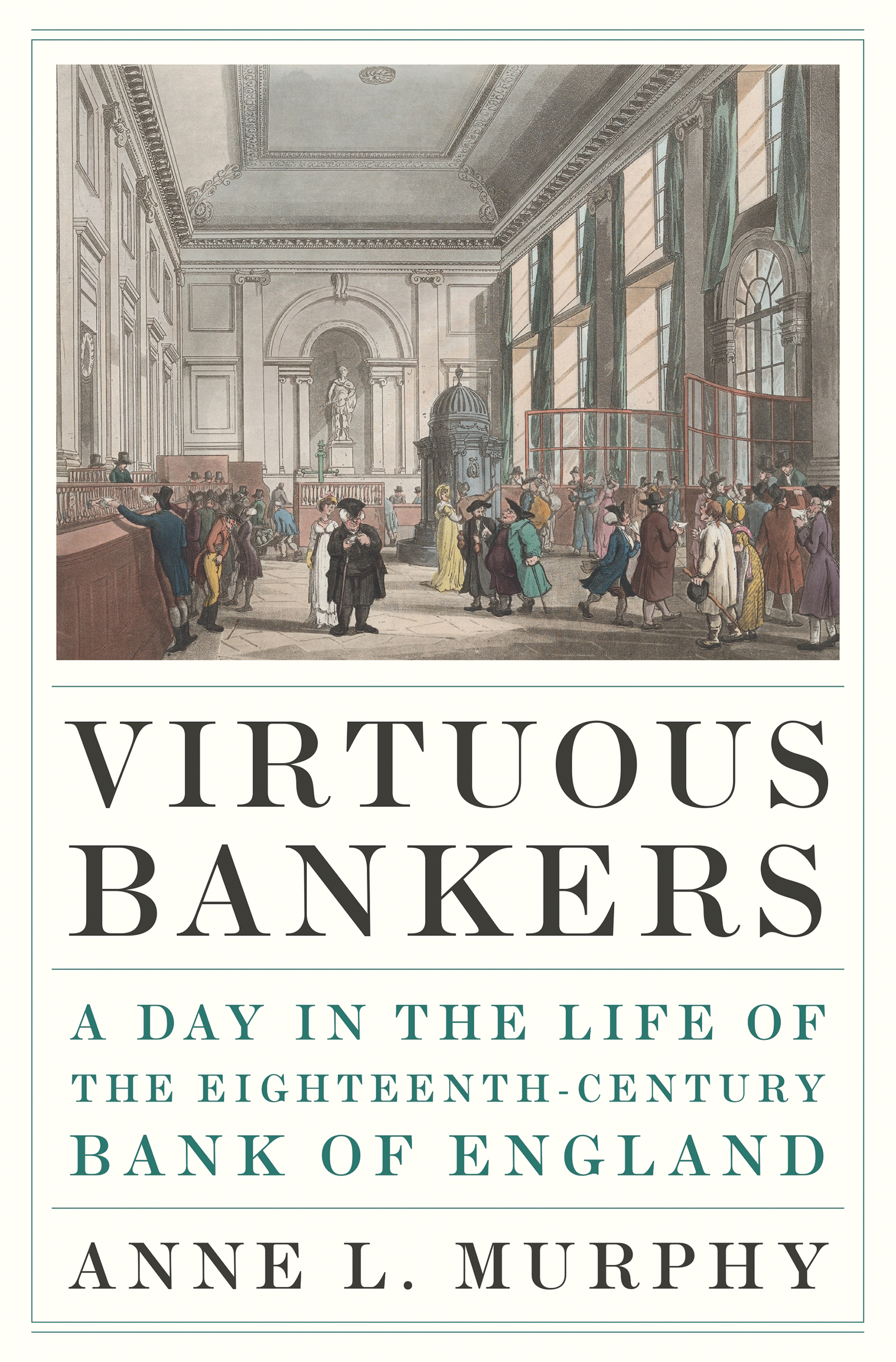VIRTUOUS BANKERS
Virtuous Bankers
A DAY IN THE LIFE OF THE EIGHTEENTH-CENTURY BANK OF ENGLAND

Anne L. Murphy
PRINCETON UNIVERSITY PRESS
PRINCETON & OXFORD
Copyright 2023 by Princeton University Press
Princeton University Press is committed to the protection of copyright and the intellectual property our authors entrust to us. Copyright promotes the progress and integrity of knowledge. Thank you for supporting free speech and the global exchange of ideas by purchasing an authorized edition of this book. If you wish to reproduce or distribute any part of it in any form, please obtain permission.
Requests for permission to reproduce material from this work should be sent to
Published by Princeton University Press
41 William Street, Princeton, New Jersey 08540
99 Banbury Road, Oxford OX2 6JX
press.princeton.edu
All Rights Reserved
Library of Congress Cataloging-in-Publication Data
Names: Murphy, Anne L., author.
Title: Virtuous bankers : a day in the life of the eighteenth-century Bank of England / Anne Louise Murphy.
Description: Princeton : Princeton University Press, [2023] | Includes bibliographical references and index.
Identifiers: LCCN 2022030968 (print) | LCCN 2022030969 (ebook) | ISBN 9780691194745 (hardback ; alk. paper) | ISBN 9780691248431 (ebook)
Subjects: LCSH: Bank of England. | Banks and banking, CentralGreat Britain History18th century. | Monetary policyGreat BritainHistory18th century.
Classification: LCC HG2994 .M87 2023 (print) | LCC HG2994 (ebook) | DDC 332.1/10942dc23/enk/20220818
LC record available at https://lccn.loc.gov/2022030968
LC ebook record available at https://lccn.loc.gov/2022030969
Version 1.0
British Library Cataloging-in-Publication Data is available
Editorial: Hannah Paul, Josh Drake
Jacket Design: Karl Spurzem
Production: Erin Suydam
Publicity: Kate Hensley, Charlotte Coyne
Jacket Credit: The Great Hall, Bank of England (Microcosm of London, plate 7). Designed and etched by Thomas Rowlandson and Augustus Charles Pugin. Courtesy of The Elisha Whittelsey Collection, The Elisha Whittelsey Fund, 1959 / The Metropolitan Museum of Art.
For Philip Cottrell, in the hope that he would have approved
CONTENTS
- ix
- xi
FIGURES AND TABLES
Figures
A View of the Bank of England (1816), Daniel Havell, printmaker, after a drawing by Thomas Hosmer Shepherd
The banks income from discounts and private loans
Plan of the Hall
Thomas Rowlandson, The Great Hall, Bank of England (1808)
Plan of the Passage
Thomas Rowlandson, The Bank (London, 1792)
Annual numbers of transfers of stock, 16941754
George Elgar Hicks, Dividend Day at the Bank (1859)
Thomas Rowlandson, An Eating House (c. 1815)
Average salary of cohort of 1783 by length of experience
Average salary of cohort of 1783 by age
James Gillray, A March to the Bank (1787)
Tables
Socio-economic status of sellers and buyers of three per cent consols, 1784
Stated addresses of sellers and buyers of three per cent consols, 1784
Gender of sellers and buyers of three per cent consols, 1784
Occupation/social status of female sellers and buyers of three per cent consols, 1784
ACKNOWLEDGEMENTS
THIS BOOK HAS TAKEN far too long to write, and along the way I have incurred many debts. The most important of these debts is to the late Professor Philip Cottrell, my mentor and former colleague, to whom this book is dedicated. Conversations with Phil shaped the early stages of this project and helped me think through the contents of the Minutes of the Committee of Inspection and consider their meaning. I shall always be grateful for those conversations and for Phils capacity to critique and challenge with generosity, kindness and humour.
A conversation with David Kynaston convinced me that I could write this book as a day in the life. Although there were many times I regretted the decision to follow that format, I was, in the end, pleased with the outcome and enjoyed the challenge of trying to make it work and make sense. I am grateful also to Natalie Roxburgh for many formative conversations about the Bank, its spaces and their meaning.
The Bank of England Archive and Museum were unfailingly attentive and supportive over the many visits and enquiries that were required for this project, even though I imagine they never thought it would actually see the light of day. I also owe a debt to the University of Hertfordshire and former colleagues in the History Group for research time, support and collegiality.
My thinking about the late eighteenth-century Bank was stimulated by conversations with many friends and colleagues including Ann Carlos, Julian Hoppit, Larry Klein, Inger Leemans, James Macdonald, Ciara Meehan, Renaud Morieux, Larry Neal, Malcolm Noble, Patrick OBrien, David Ormrod, Helen Paul, Patrick Walsh, Carl Wennerlind, Koji Yamamoto, Nuala Zahedieh, and the always delightful participants of the Money, Power and Print Colloquiums. These conversations have certainly improved what follows, as did the suggestions of the anonymous reviewers of the manuscript. Any remaining infelicities and errors are mine alone.
Lastly, but certainly not least, I am grateful to Princeton University Press, and especially to Josh Drake, for their willingness to believe, on the slightest of evidence, that the manuscript eventually would be finished.
Introduction
ON 14 MARCH 1783, three Bank of England directorsSamuel Bosanquet, Thomas Dea and Benjamin Winthropembarked on a project to inspect all aspects of the institutions work. The Committee of Inspection, as they were to be known, were to meet at such times as may be most convenient to themselves and inspect the management of every Office together with all such Books & Papers as they may think necessary.
One can scarcely imagine twenty-first-century bankers being so confident about their contribution to the public good. The popular imagination now often sees them dwelling in the bowels of hell rather than cathedrals of credit. The directors of the eighteenth-century Bank of England, however, had little trouble convincing themselves that the business they managed was essential to the smooth functioning of the national economy and worthy of the countrys esteem. This book explores the basis of that conviction: the Banks ability to deliver a set of services that were essential to the state and commanded the confidence of a wide public. It is a story that has not been told before. Sir John H. Claphams The Bank of England: A History, published in 1944, remains the only monograph-length discussion of the institutions first century. This book aims to rescue the eighteenth-century Bank from its relative obscurity.
The narrative ranges from the quiet mundanities of discounting bills and keeping ledgers via the noise and chaos of the financial market and the threat from rioting crowds to the aesthetics of one of Londons finest buildings and the messages of creditworthiness embedded in that architecture and in the very visible actions of the Banks clerks. Its focus is not the sweep of the Banks activities during the long eighteenth century but rather a moment in time: the year that encompassed the ending and aftermath of the War of American Independence. This choice is partly practical. The Minute books of the Inspection conducted between 1783 and 1784 provide a unique opportunity to study the Banks work in intimate detail. But there are also important reasons why this moment in time is an appropriate focus. The 1780s witnessed the beginnings of the age of reform, the earliest manifestation of which was the significant reorganisation of public finance.


